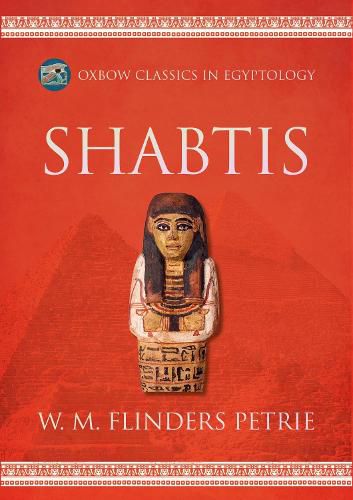Readings Newsletter
Become a Readings Member to make your shopping experience even easier.
Sign in or sign up for free!
You’re not far away from qualifying for FREE standard shipping within Australia
You’ve qualified for FREE standard shipping within Australia
The cart is loading…






Facsimile edition of the 1972 reissue of Flinders Petrie's 1914 pioneering typological catalog of Egyptian Shuabtis, one of a number of such catalogs to be reissued in this new series. Shuabtis, funeral statuettes made of stone or timber, were frequently encountered in early tomb and cemetery excavations. Petrie identified and describes a chronological sequence of development from simple statuettes emphasizing the head, which appear to be substitutes for real heads that were often removed from the body, through to later detailed forms that he recognized as substitutes for the mummy. He presents a discussion of the formula used in the inscriptions, their royal and sacred affinities, and identifies examples of additional texts. The examination of forms, formulaic inscriptions, materials and dating evidence is accompanied by transliteration of names, illustrated inscriptions, and over 650 photographed statuettes. AUTHOR: Sir William Matthew Flinders Petrie (1853?1942) was a pioneer in the field of 'modern' archaeology. He introduced the stratigraphical approach in his Egyptian campaigns that underpins modern excavation techniques, explored scientific approaches to analysis and developed detailed typological studies of artefact classification and recording, which allowed for the stratigraphic dating of archaeological layers. He excavated and surveyed over 30 sites in Egypt, including Giza, Luxor, Amarna and Tell Nebesheh.
$9.00 standard shipping within Australia
FREE standard shipping within Australia for orders over $100.00
Express & International shipping calculated at checkout
Facsimile edition of the 1972 reissue of Flinders Petrie's 1914 pioneering typological catalog of Egyptian Shuabtis, one of a number of such catalogs to be reissued in this new series. Shuabtis, funeral statuettes made of stone or timber, were frequently encountered in early tomb and cemetery excavations. Petrie identified and describes a chronological sequence of development from simple statuettes emphasizing the head, which appear to be substitutes for real heads that were often removed from the body, through to later detailed forms that he recognized as substitutes for the mummy. He presents a discussion of the formula used in the inscriptions, their royal and sacred affinities, and identifies examples of additional texts. The examination of forms, formulaic inscriptions, materials and dating evidence is accompanied by transliteration of names, illustrated inscriptions, and over 650 photographed statuettes. AUTHOR: Sir William Matthew Flinders Petrie (1853?1942) was a pioneer in the field of 'modern' archaeology. He introduced the stratigraphical approach in his Egyptian campaigns that underpins modern excavation techniques, explored scientific approaches to analysis and developed detailed typological studies of artefact classification and recording, which allowed for the stratigraphic dating of archaeological layers. He excavated and surveyed over 30 sites in Egypt, including Giza, Luxor, Amarna and Tell Nebesheh.